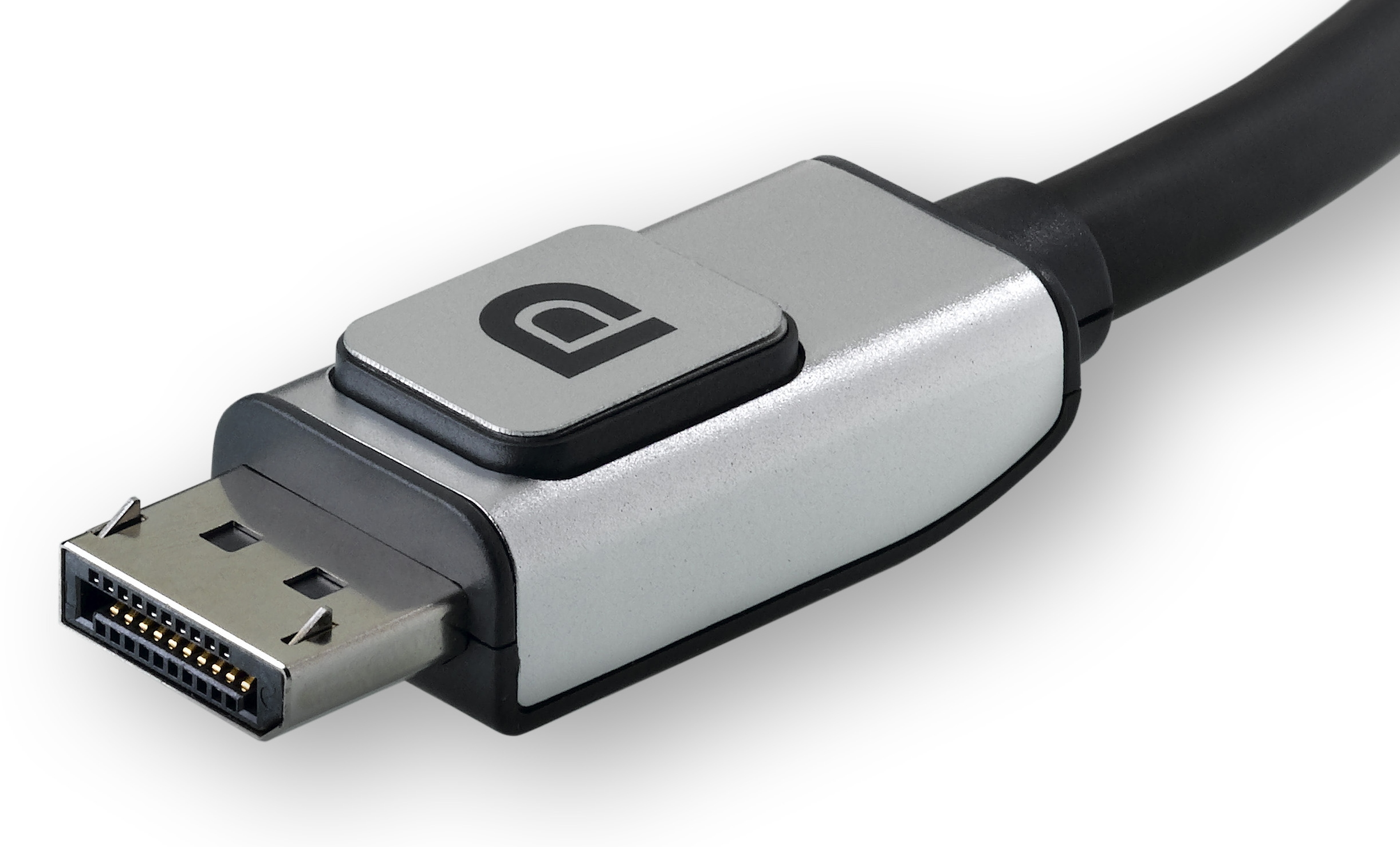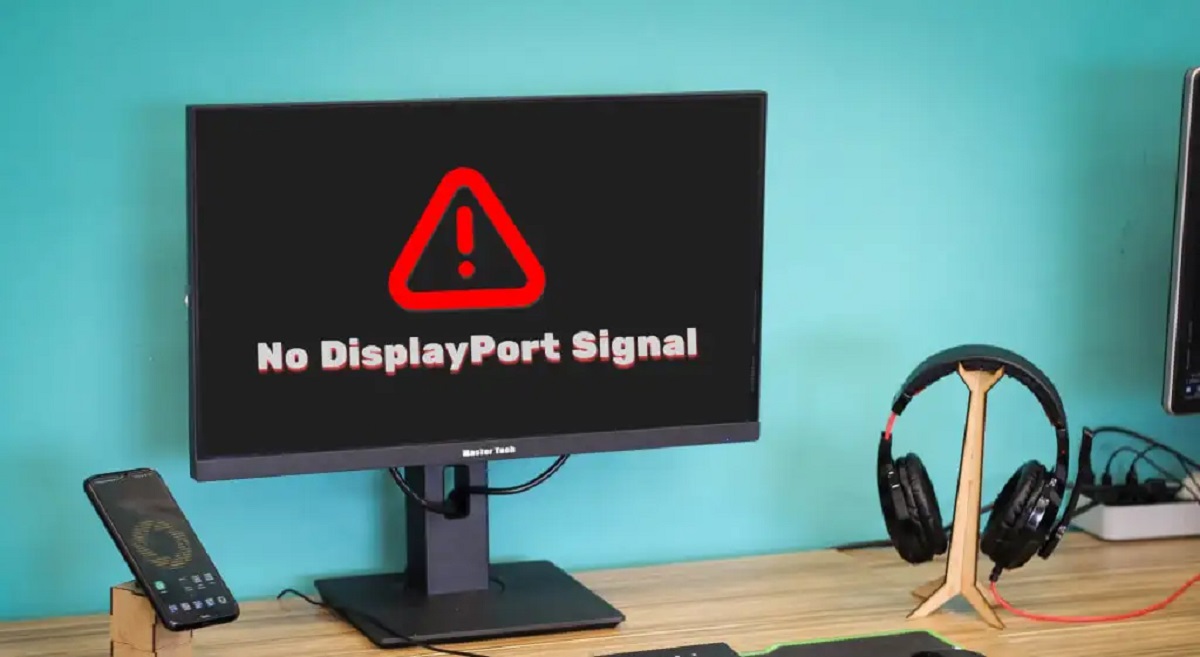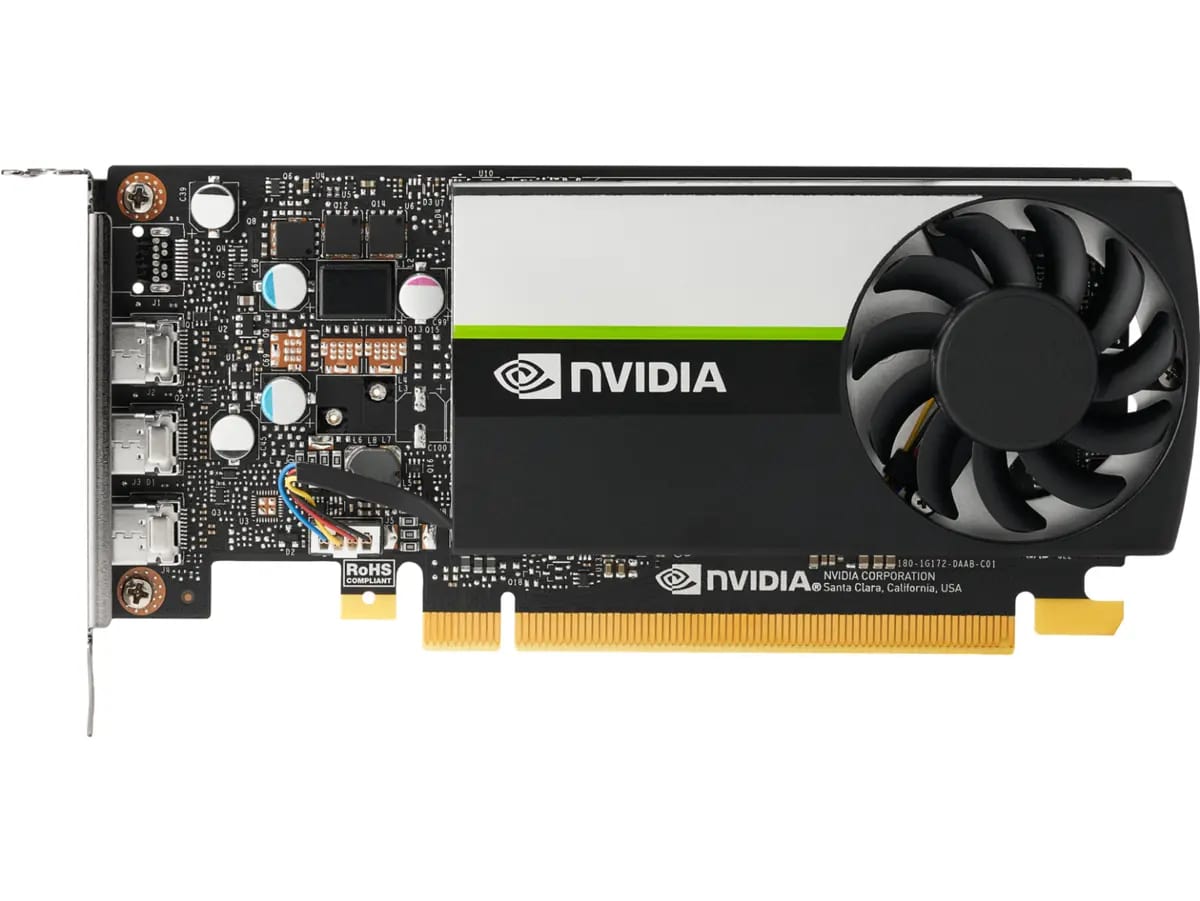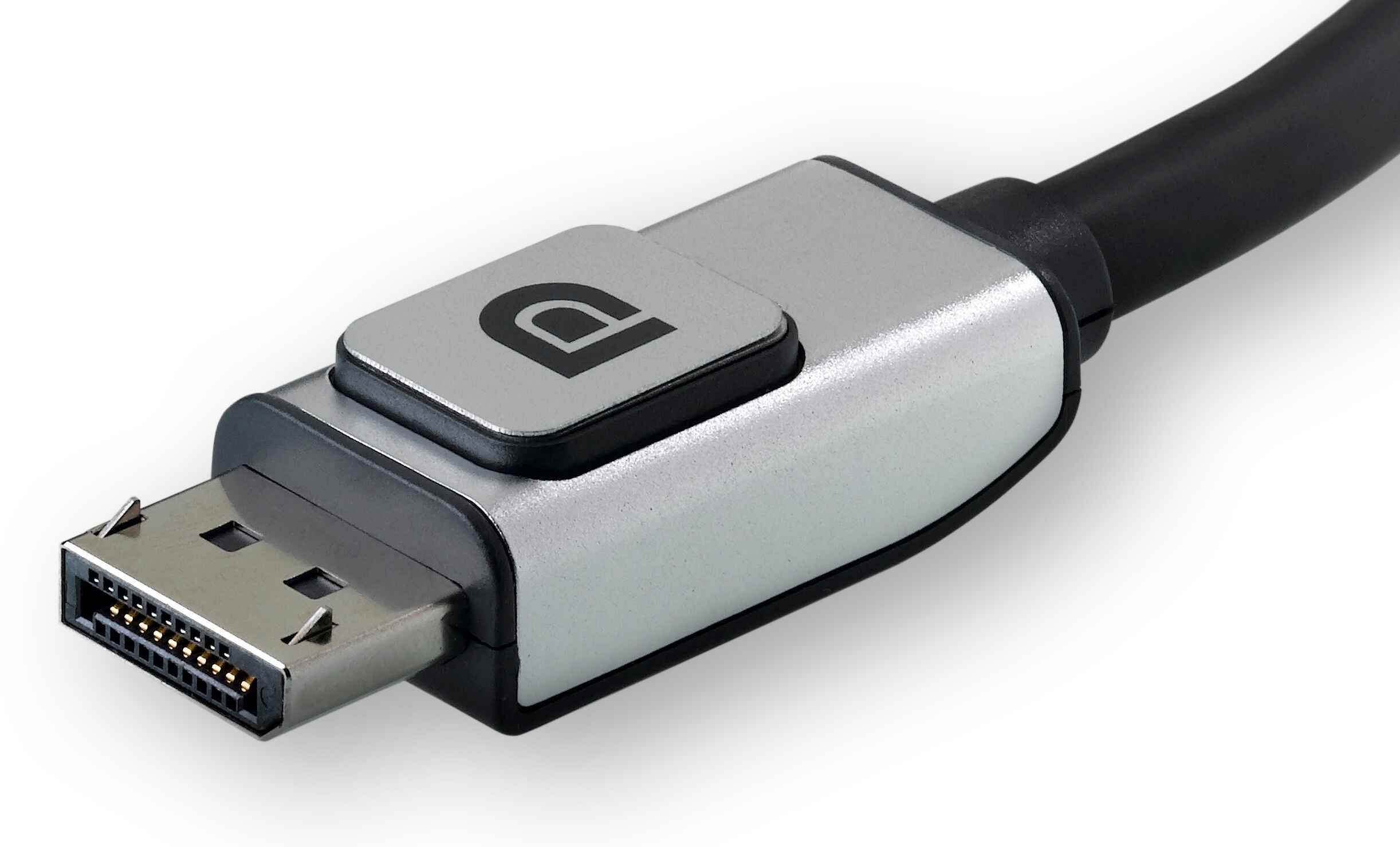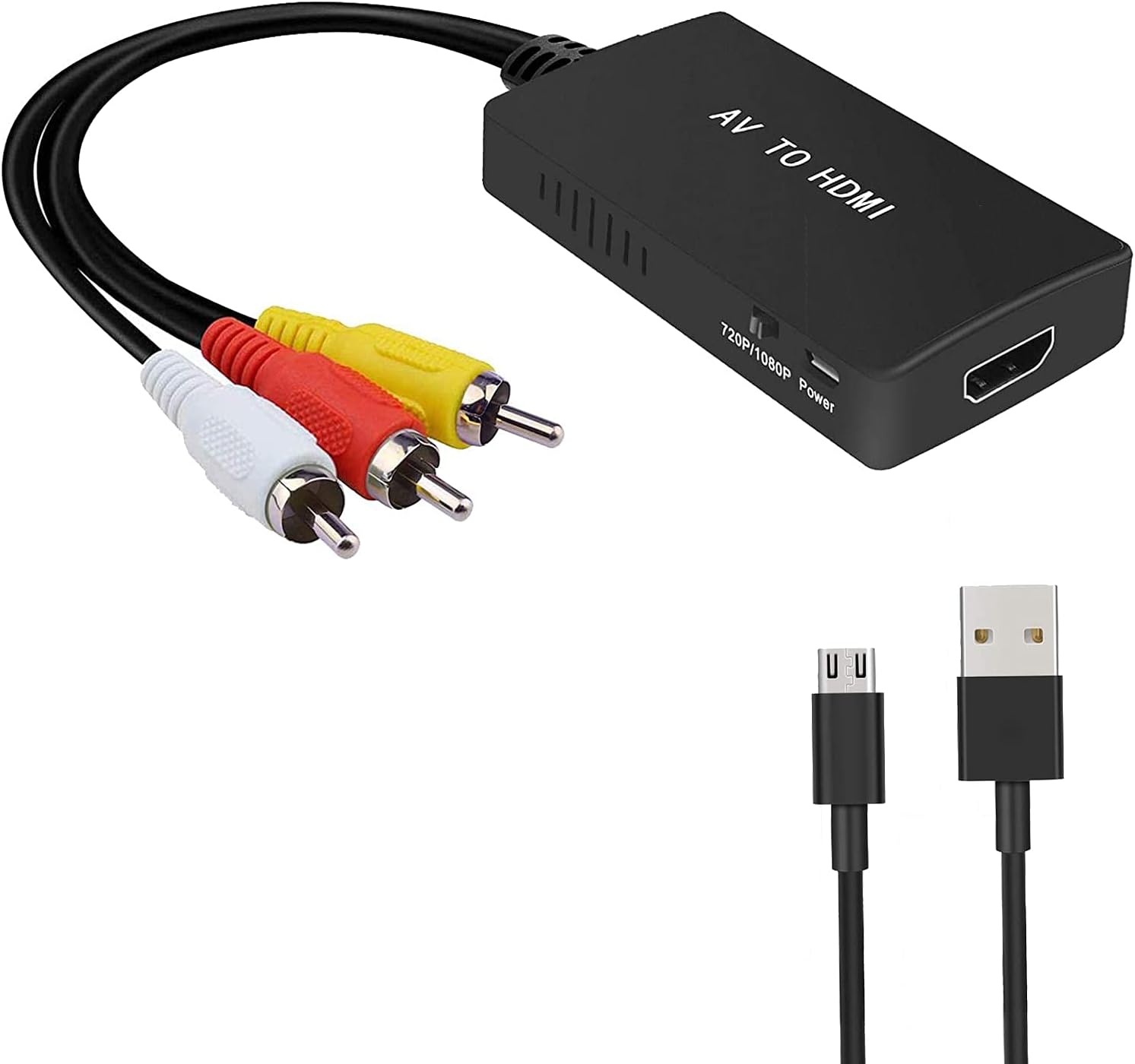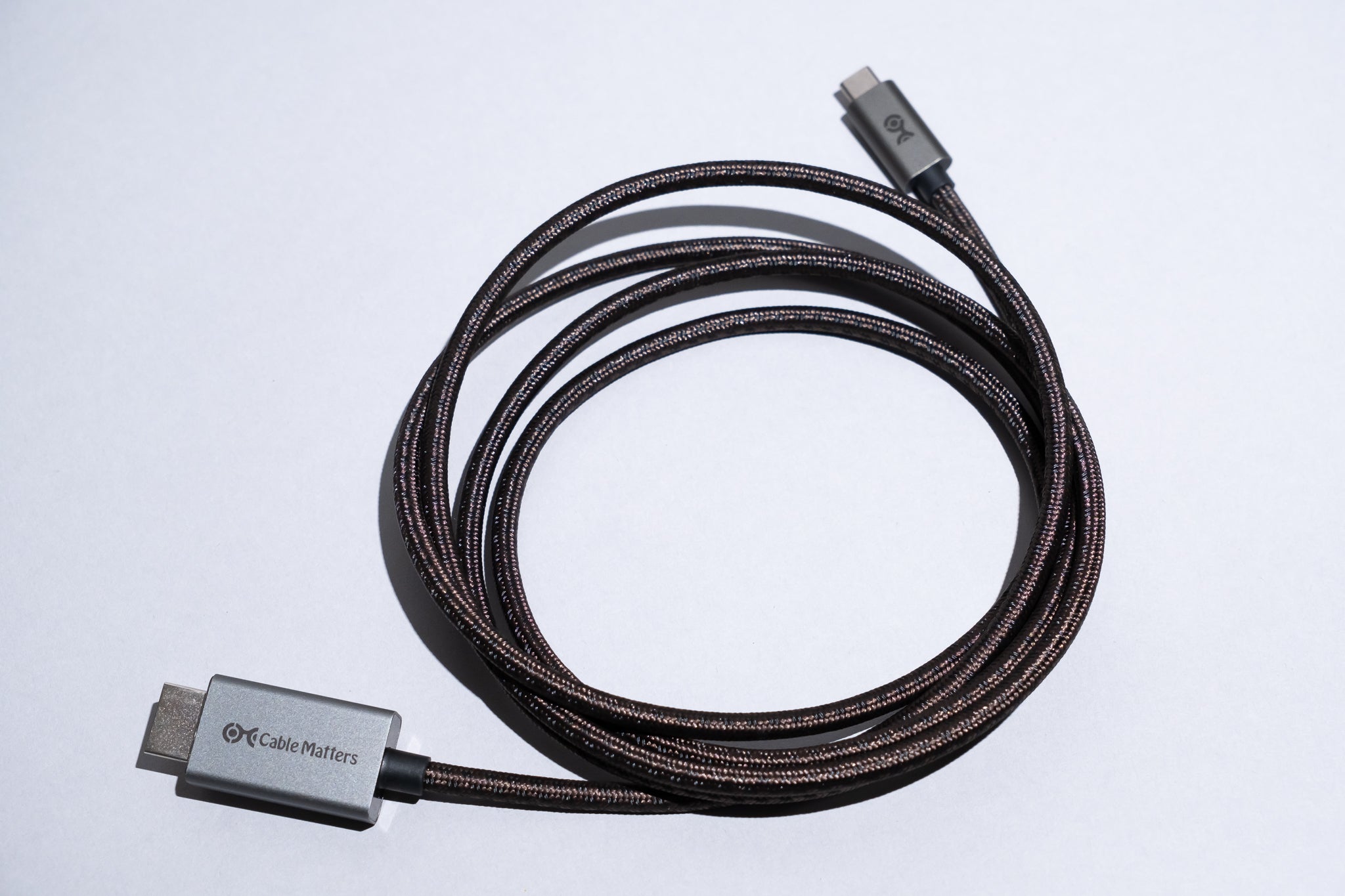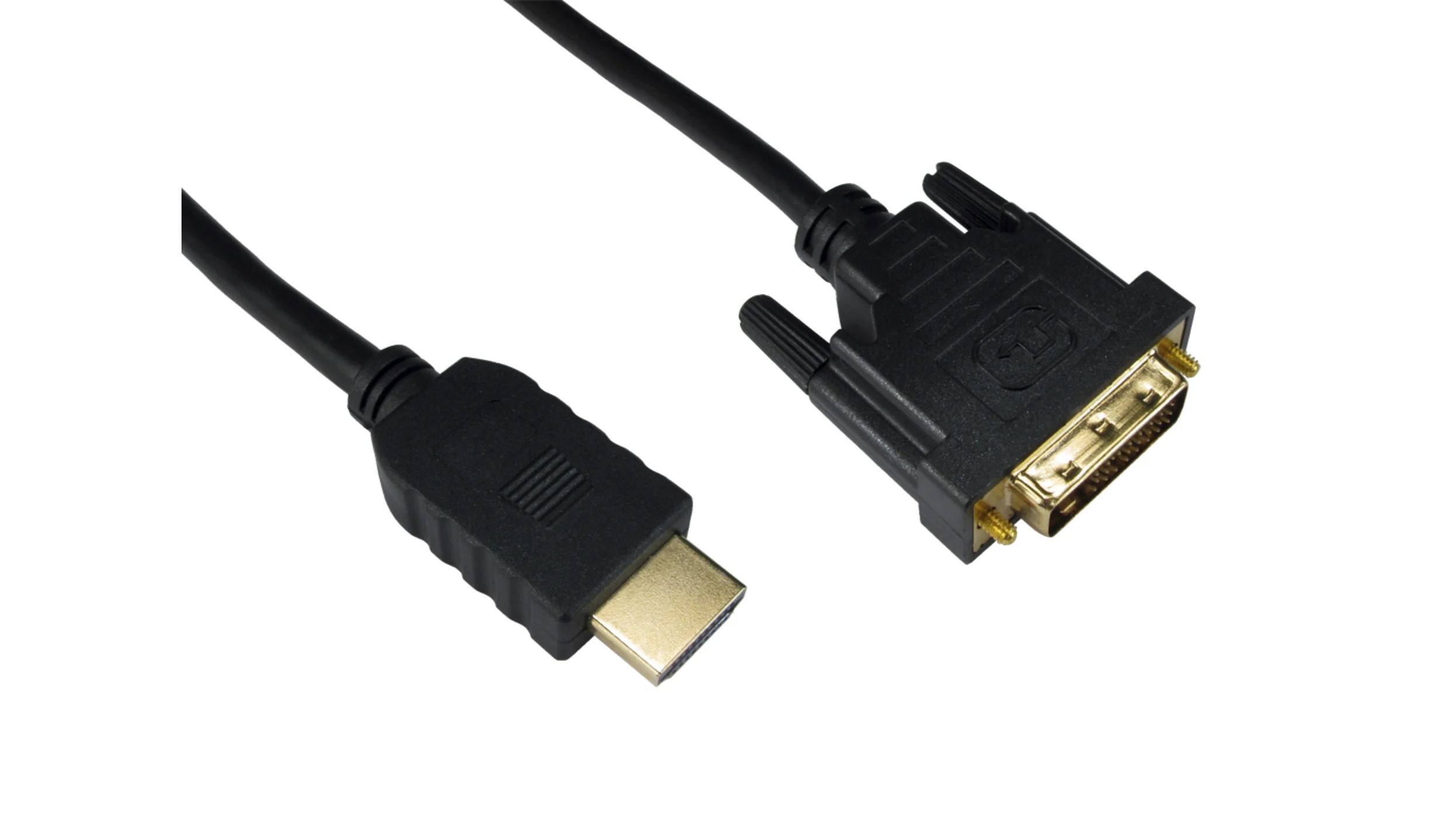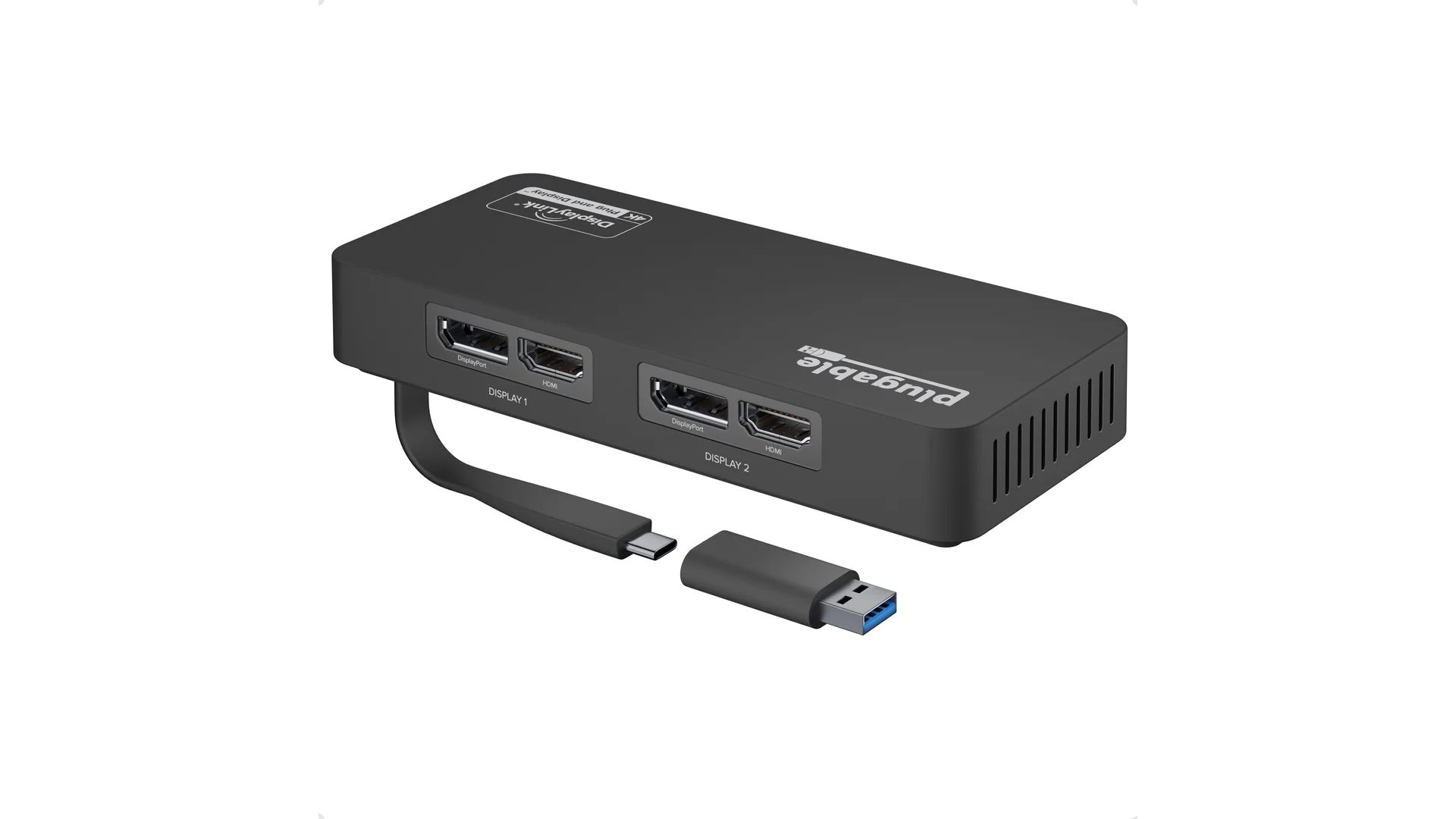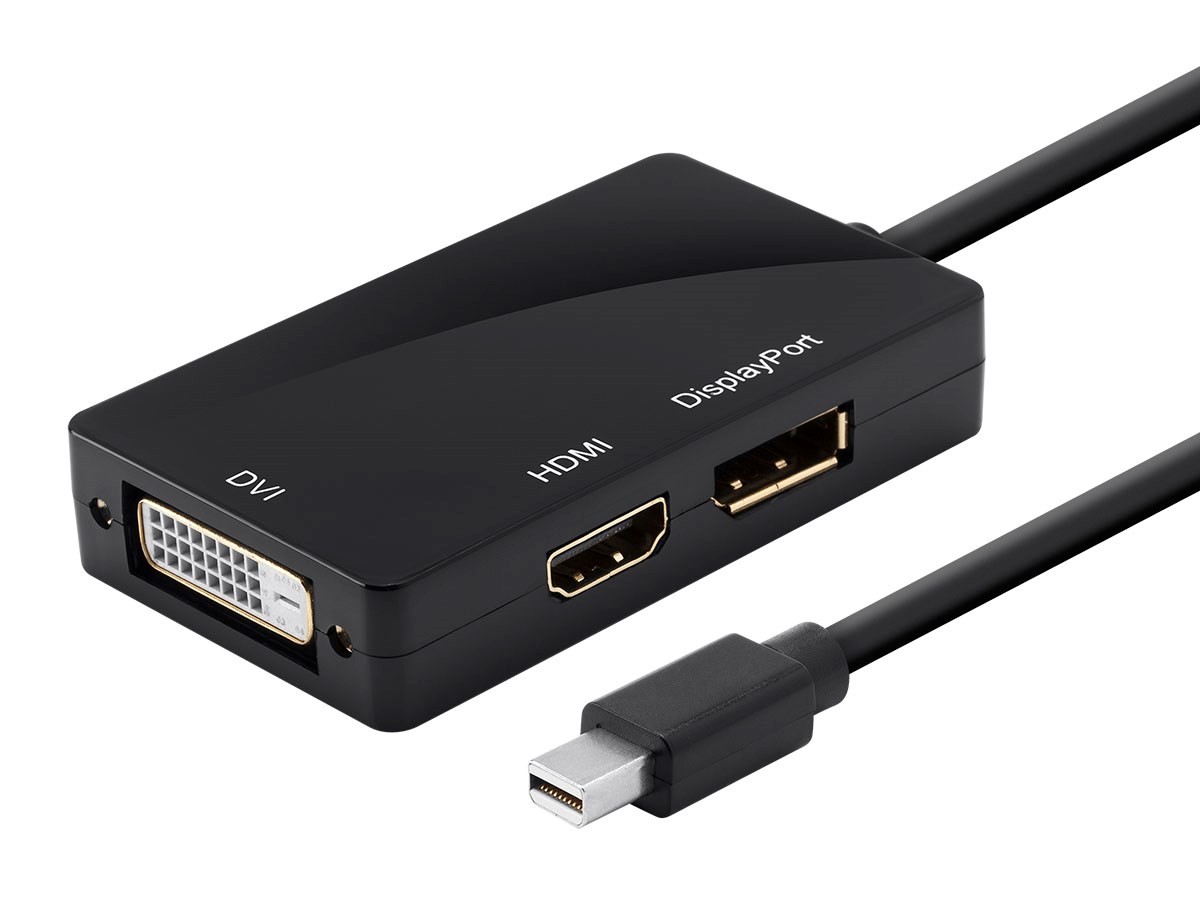Introduction
Welcome to the world of high-definition displays and cutting-edge technology! If you’ve recently purchased a monitor or are in the market for one, you may have come across the term “DP” or “DisplayPort.” But what exactly does DP on a monitor mean?
DisplayPort, commonly abbreviated as DP, is a digital display interface that allows you to connect your computer or other multimedia devices to a monitor or display. It is a standard for transmitting audio and video signals, providing high-quality visuals and superior audio performance.
In this article, we will delve into the world of DP on a monitor and explore its benefits, how it compares to other monitor connections, and provide tips on how to use it effectively. Whether you’re a tech enthusiast, a gamer, or simply looking to elevate your viewing experience, understanding DP on a monitor can open up a realm of possibilities.
So, let’s dive in and uncover the wonders of DP on a monitor!
Definition of DP on a Monitor
DisplayPort (DP) is a digital display interface that is widely used for connecting computers, laptops, gaming consoles, and other multimedia devices to high-resolution monitors or displays. It was developed by the Video Electronics Standards Association (VESA) and has become a popular standard in the industry.
DP on a monitor refers to the presence of a DisplayPort input on the monitor itself. This input allows you to connect your device to the monitor using a DisplayPort cable, enabling the transmission of audio and video signals.
One of the key advantages of DP is its ability to support high-definition and 4K resolutions. With a high bandwidth capacity and advanced video compression technology, DP can handle the demands of modern content, providing sharp and vibrant visuals.
Not only does DP offer stunning visuals, but it also supports multi-monitor setups. This means that you can connect multiple monitors to a single DP output on your computer or graphics card, creating an expansive and immersive workspace or gaming experience.
Additionally, DP is a versatile interface that can transmit both video and audio signals. This eliminates the need for separate audio cables, reducing cable clutter and simplifying the setup process.
It’s important to note that there are different versions of DisplayPort available, such as DisplayPort 1.2, 1.3, and the latest DisplayPort 1.4. Each version offers improvements in bandwidth, refresh rates, and supported display resolutions.
In summary, DP on a monitor refers to the presence of a DisplayPort input, allowing you to connect your device using a DisplayPort cable. It offers high-definition visuals, supports multi-monitor setups, and transmits both video and audio signals. With its versatility and capabilities, DP has become a popular choice for those seeking exceptional display performance.
Benefits of DP on a Monitor
DP on a monitor brings a plethora of benefits that enhance your viewing experience and elevate the performance of your display. Here are some key advantages of using DisplayPort:
- High-Quality Visuals: DisplayPort supports high-definition resolutions, including 4K and even 8K, delivering sharp and detailed visuals. Whether you’re watching movies, editing photos, or playing games, DP ensures a stunning and immersive display.
- Smooth Refresh Rates: DP offers high refresh rates, which result in smoother and more responsive visuals, especially in fast-paced gaming or dynamic content. With higher refresh rates, you can enjoy fluid motion and reduced motion blur.
- Multi-Monitor Setups: DP’s ability to support multi-monitor setups is a major advantage for professionals and gamers alike. By connecting multiple monitors to a single DP output, you can expand your workspace or create an immersive gaming setup, boosting productivity and enhancing your gaming experience.
- Audio and Video in One: Unlike some other interfaces, DP can transmit both video and audio signals, eliminating the need for separate audio cables. This simplifies your setup, reduces clutter, and ensures seamless audio-visual synchronization.
- Long Cable Lengths: DisplayPort cables have the advantage of supporting longer cable lengths without any significant loss in signal quality. This allows you to set up your monitor at a comfortable distance from your device, providing flexibility and convenience.
- Daisy Chaining: DP supports daisy chaining, a feature that enables you to connect multiple monitors in a linear manner using a single DP output. This simplifies cable management and reduces the number of required cables, enhancing the aesthetics of your workspace.
- Future-Proof: DisplayPort has been continuously evolving and improving with newer versions. The latest versions, such as DisplayPort 1.4, offer increased bandwidth and support for advanced technologies like HDR (High Dynamic Range), ensuring that your display is ready for future advancements.
In summary, the benefits of DP on a monitor include high-quality visuals, smooth refresh rates, support for multi-monitor setups, audio and video transmission in one cable, longer cable lengths, daisy chaining capabilities, and future-proof technology. These advantages make DisplayPort an excellent choice for those seeking a superior and versatile display connection.
DP vs. Other Monitor Connections
When it comes to connecting your devices to a monitor, there are various options available. Let’s compare DisplayPort (DP) with other popular monitor connections to understand the advantages and trade-offs:
- HDMI: HDMI (High-Definition Multimedia Interface) is a commonly used interface for connecting devices to monitors and TVs. While HDMI supports high-definition resolutions, DP offers higher bandwidth, making it a better choice for high-refresh-rate displays and higher resolutions like 4K and beyond. Additionally, DisplayPort supports daisy chaining and has longer cable lengths compared to HDMI.
- DVI: DVI (Digital Visual Interface) is an older interface that was widely used before the emergence of HDMI and DP. DVI supports high-definition resolutions but lacks audio transmission capabilities. DP, on the other hand, supports both audio and video signals, making it a more versatile choice. DP also has a higher maximum bandwidth, allowing for better performance in demanding applications.
- VGA: VGA (Video Graphics Array) is an analog interface that is outdated and less common today. VGA supports lower resolutions and doesn’t provide the same level of image quality as DP. DP is a digital interface, offering superior visuals, higher resolutions, and better compatibility with modern devices.
- Thunderbolt: Thunderbolt is a versatile interface that combines DisplayPort with other data protocols, such as PCIe and USB. Thunderbolt supports high-speed data transfer and can provide power to connected devices, making it a compelling choice for users looking for a single-cable solution. However, Thunderbolt is typically found on Apple devices and may not be as widely available as DP.
While each connection type has its own strengths and use cases, DP stands out for its high bandwidth, support for high-resolution displays, audio transmission capabilities, and compatibility with modern devices. It offers an excellent balance of performance, versatility, and future-proofing, making it a popular choice for many users.
When selecting a monitor or considering different connection options, it’s essential to assess your specific needs, display requirements, and the devices you’re planning to connect. DP is often the preferred choice for gamers, professionals, and enthusiasts seeking a high-performance display connection.
How to Use DP on a Monitor
Using DP on a monitor is relatively straightforward and requires a few simple steps. Let’s walk through the process:
- Check for a DP Port: First, ensure that your monitor has a DisplayPort input. It is usually labeled as “DP” or “DisplayPort.” If your monitor doesn’t have a DP port, you may need to consider alternative connection options.
- Gather the Necessary Components: To connect your device to the monitor, you will need a DisplayPort cable. Make sure you have a compatible cable available. DisplayPort cables come in different versions, so try to choose one that matches the capabilities of your monitor and device.
- Connect the Cable: Once you have the necessary components, locate the DisplayPort output on your device (such as a computer or graphics card). Insert one end of the DisplayPort cable into the DP output. Then connect the other end to the DP input on your monitor.
- Adjust Monitor Settings: After making the physical connection, turn on your monitor and ensure it is set to the correct input source. Most monitors have an input selection button or menu that allows you to choose the DP input as the video source.
- Configure Display Settings: Depending on your operating system, you may need to configure the display settings to optimize the resolution, refresh rate, and other display parameters. Navigate to the display settings on your device and adjust them according to your preferences.
- Test and Enjoy: Once everything is connected and configured, test the display to ensure it is functioning correctly. You should see the content from your device on the monitor. Enjoy the high-quality visuals and immersive experience provided by DP!
It’s worth noting that some monitors may have additional settings specific to DP, such as the ability to enable adaptive sync technologies like AMD FreeSync or NVIDIA G-Sync. If your monitor supports these features, explore the monitor’s settings menu to optimize your gaming or visual experience.
If you encounter any issues during the setup or experience problems with the display, refer to the monitor’s user manual or consult the manufacturer’s support resources for troubleshooting steps.
By following these simple steps, you can effectively connect and utilize DP on a monitor, unlocking the full potential of your display and enjoying the benefits of a high-performance connection.
Troubleshooting DP on a Monitor
While using DP on a monitor is generally a smooth experience, there may be instances where you encounter certain issues. Here are some common troubleshooting steps to help you resolve any problems you may face:
- Check Cable Connections: Ensure that the DisplayPort cable is securely plugged into both the DP output on your device and the DP input on your monitor. Sometimes, loose connections can cause display issues.
- Try a Different Cable: If you’re experiencing problems, it’s worth trying a different DisplayPort cable to rule out any cable-related issues. Some cables may not be compatible or might be damaged, affecting the signal transmission.
- Update Graphics Drivers: Outdated or incompatible graphics drivers can lead to display problems. Visit the website of your graphics card manufacturer and download the latest drivers for your specific model. Install the drivers and restart your system to ensure optimal performance.
- Check Monitor and Graphics Card Compatibility: Verify that your monitor and graphics card are compatible with each other. Ensure that both devices support the same version of DisplayPort and have the necessary capabilities to handle the desired resolution and refresh rate.
- Reset Monitor Settings: If you’re experiencing unusual display behavior, try restoring your monitor’s settings to their default values. Refer to the monitor’s user manual for instructions on how to perform a factory reset.
- Inspect for Physical Damage: Visually inspect the DisplayPort connectors on both your device and monitor for any signs of physical damage. Bent or broken pins or damaged connectors can hinder proper signal transmission. If you notice any damage, consider contacting the manufacturer for assistance or replacing the affected component.
- Consult Manufacturer Support: If you’ve exhausted all troubleshooting steps and are still experiencing issues, it’s best to reach out to the manufacturer’s technical support. They can provide specific guidance based on your monitor model and help you resolve any underlying problems.
Remember to stay patient while troubleshooting and avoid making changes or adjustments without understanding their potential impact. It’s always a good idea to document any changes made or steps taken in case you need to revert them later.
By following these troubleshooting steps and seeking assistance when needed, you can overcome any challenges and ensure a smooth DP experience on your monitor.
Conclusion
DisplayPort (DP) on a monitor offers a range of benefits, including high-definition visuals, smooth refresh rates, support for multi-monitor setups, audio and video transmission in one cable, longer cable lengths, and daisy chaining capabilities. Compared to other monitor connections like HDMI, DVI, and VGA, DP stands out for its higher bandwidth, compatibility with high-resolution displays, and versatility.
When using DP on a monitor, make sure to check for a DP port, gather the necessary components, connect the cable securely, adjust the monitor and display settings, and enjoy the high-quality visuals. While troubleshooting, perform basic checks, try a different cable if necessary, update graphics drivers, ensure compatibility between the monitor and graphics card, reset monitor settings if needed, inspect for physical damage, and seek manufacturer support if the problem persists.
DP on a monitor has become an industry standard due to its exceptional performance and versatility. Whether you’re a gamer, professional, or tech enthusiast, understanding and utilizing DP on your monitor can enhance your viewing experience and provide you with the optimal display connection for your needs.
So, embrace the wonders of DP on a monitor and unlock the full potential of your display, whether you’re immersing yourself in the latest gaming adventure or working on creative projects with stunning visual precision.







